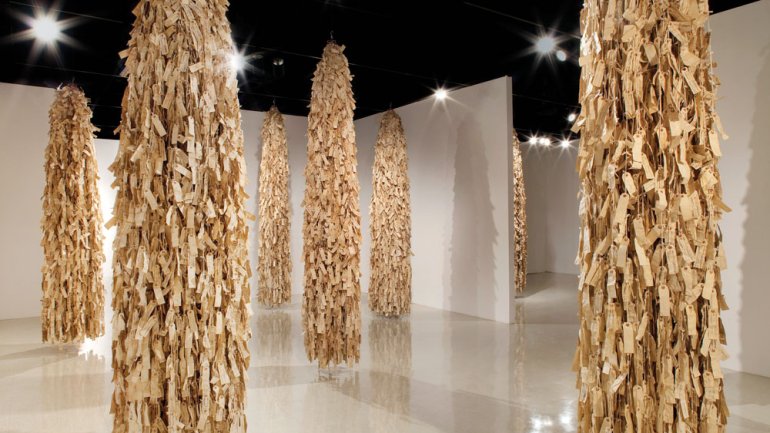When Artists Write About Their Work
When Artists Write About Their Work
Q: What is the purpose of an artist’s statement? What are the elements of the ideal statement? And is it even a good idea to have artists write them?
A: The first thing to say about artist’s statements is that they’re extremely hard to write; who wants to be an artist with one of those hanging over your head? Consider: Artists dedicate their lives to visual, not verbal, creativity. Most consider their art to be at least partly intuitive. And most work in expressive forms with no real equivalent in words – otherwise they’d be poets or novelists.
The difficulties are compounded in the case of craft. For good reason, we speak of the “tacit knowledge” embedded in a well-made object. The pleasures of craft are often hand to hand, as the nuanced touch of a maker communicates itself to the equally sensitive fingers of a user. Describing such subtlety often seems unnecessary. It can even be an unwelcome interruption, like a public address announcement delivered mid-symphony.
Yet gallerists, museum curators, and book editors continually ask artists, including craft makers, to explain their work. We’ve all seen work that is incomprehensible without the accompanying wall text. Craft rarely requires this sort of explication, but it may involve technical or, yes, conceptual annotations that enrich the viewing or using experience.
It’s also worth remembering that if there were no such thing as artist’s statements, only critics and historians would write about art. And, as the painter Barnett Newman supposedly said, “Artists need critics like birds need ornithologists.” So perhaps artists should speak for themselves, before someone else puts words in their mouths.
In the end, there are good reasons for artists to write about their work. But how should they do it? For me, a good artist’s statement is an extension of the work, rather like a museum label, not a standalone piece of prose. Instead, it should encourage the viewer to take a second look, deepening what he or she has already seen. It should match (or at least complement) the work in tone, so that the two work as elements of a larger whole.
Most important, it should be honest. No posturing, no after-the-fact theorizing, no mystification. When writing an artist’s statement, there is nowhere to hide, because it is part of the larger creative act. We critics and historians will have our say eventually, and we will consider the statement fair game for interpretation, as much as the work itself. Don’t blame us for that. Those of us who love art and artists love them all the way.
So if you’re in the predicament of writing an artist’s statement, try thinking of it as a particularly candid note, dashed off to an ardent admirer. After all, a love letter is tough to write too. But who doesn’t love to get one?
Click below to download an example of an artist’s statement by Wendy Maruyama on The Tag Project. Got a question? Email [email protected]. Glenn Adamson is head of research at the Victoria and Albert Museum, London, and co-editor of the Journal of Modern Craft.

